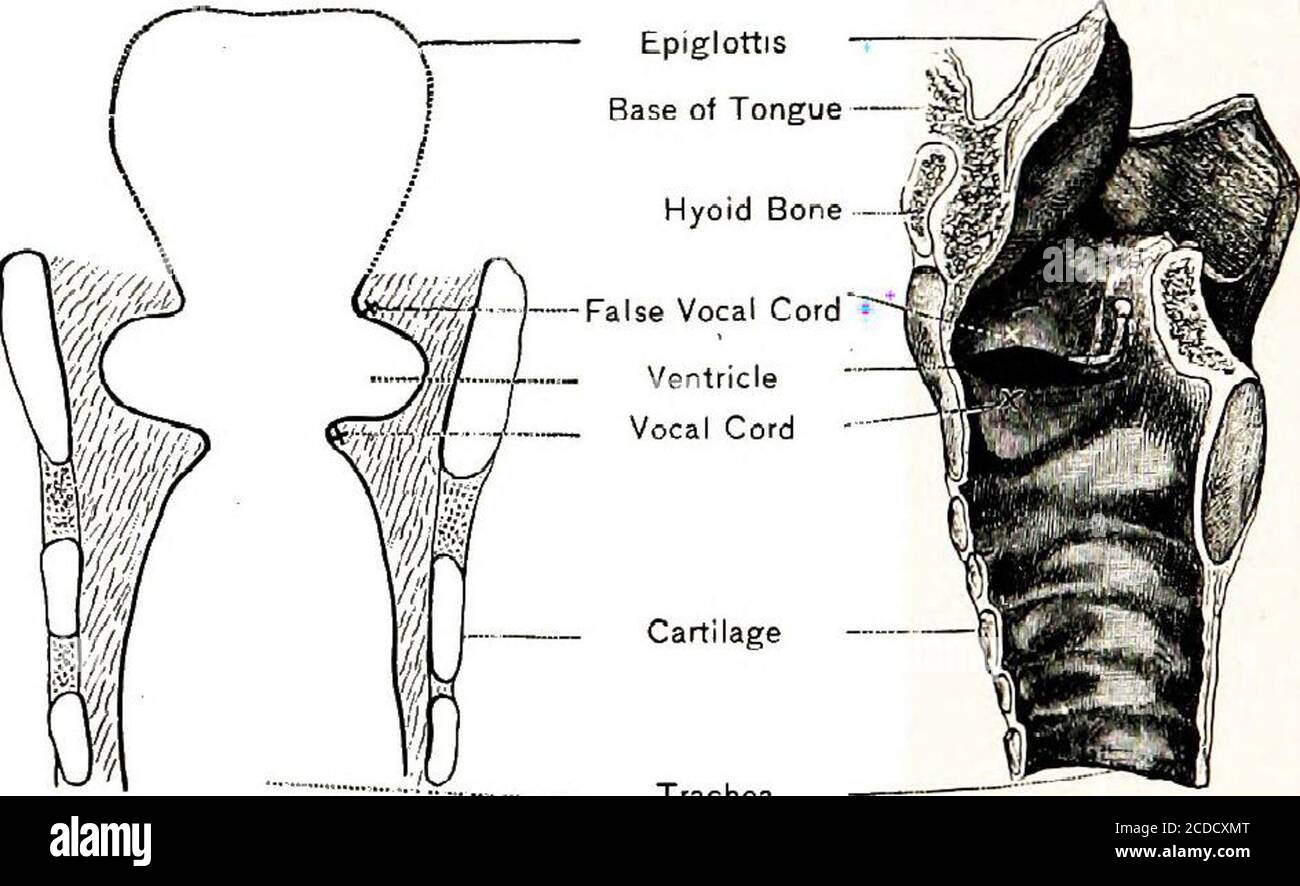. Physiology, experimental and descriptive . .larynx we see that its cartilages are con-nected with each other by ligaments which allow considerablefreedom of motion; that they are also connected by muscleswhich move them one upon another. The range of movementof the arytenoid cartilages and the muscular control of thesecartilages is of special interest, for we see that the vocalcords, so-called, are attached to these cartilages, and that thechief variations of the voice are thereby regulated. The vocal cords are badly named. They are seen to be 324 THE LARYNX. mere ridges projecting from the

Image details
Contributor:
Reading Room 2020 / Alamy Stock PhotoImage ID:
2CDCXMTFile size:
7.1 MB (296.6 KB Compressed download)Releases:
Model - no | Property - noDo I need a release?Dimensions:
2020 x 1237 px | 34.2 x 20.9 cm | 13.5 x 8.2 inches | 150dpiMore information:
This image is a public domain image, which means either that copyright has expired in the image or the copyright holder has waived their copyright. Alamy charges you a fee for access to the high resolution copy of the image.
This image could have imperfections as it’s either historical or reportage.
. Physiology, experimental and descriptive . .larynx we see that its cartilages are con-nected with each other by ligaments which allow considerablefreedom of motion; that they are also connected by muscleswhich move them one upon another. The range of movementof the arytenoid cartilages and the muscular control of thesecartilages is of special interest, for we see that the vocalcords, so-called, are attached to these cartilages, and that thechief variations of the voice are thereby regulated. The vocal cords are badly named. They are seen to be 324 THE LARYNX. mere ridges projecting from the sides of the larynx. Underthe covering of mucous membrane are ligaments and musclesthat may be stretched to various degrees and placed in differ-ent positions, according to the sound that is to be produced. While we are quietly breathing, the vocal cords, or bands, lie back, like low ridges, against the side of the larynx, andoffer nearly the whole channel of the larynx for the free pas-sage of air for breathing purposes. But when we wish to. FROM RIGHT TO LEFT Fig. 94. Longitudinal Sections of the Larynx. produce vocal sound, the vocal cords are made to stand outfarther from the side walls, and interfere with the free pas^sage of the air. In examining the larynx it is seen that thevocal cords are attached close to each other in front, but thatat the back of the larynx they diverge widely (in the positionof rest), forming a letter V, with the angle of the V in front, just back of Adams apple. When changes in the voice orin breathing are being made, the white glistening vocal cordsmay be seen to come together or to go apart like the blades of VOCAL CORDS. 325 a pair of scissors. In a high note the cords are close togetherand nearly parallel. As the air is forced past the approxi-mated edges of the vocal cords, they are set in vibration, andproduce the sound called the voice. The principle of theaction of the vocal cords can be illustrated by the commontoy known as the the squeakin